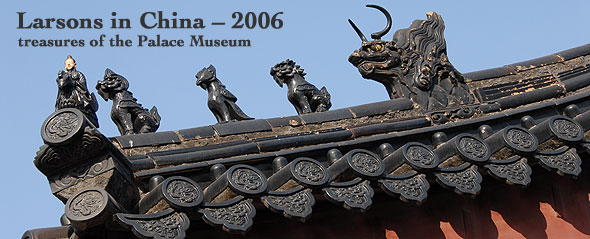
Photographs by Bill Larson
Following the 2006 gem and mineral conference, the Larsons, along with gemologist Edward Boehm and noted gem cutter Mark Kaufman, toured the Forbidden City in Beijing, which contains the Palace Museum. As the museum website puts it, the palace was “the ritual center of two dynasties, the Ming and Qing,” as well as the storehouse for imperial treasures. Below are photographic highlights of their tour, many of which will be of interest to gemstone enthusiasts.
 |
| A rubellite tourmaline from San Diego County in the jewelry collection of the Palace Museum. |
 |
| Mark Kaufman and Edward Boehm stand beside a massive carved jade boulder. Bill Larson recalls that this is from the era of Genghis Khan and would have been carried on the warpath for good luck. A closer look below reveals caves, tree branches, and human figures engaged in various labors. The carving—one of several such large scale carvings—has the fine detail and styling found in some of the museum’s paintings and hanging scrolls. |
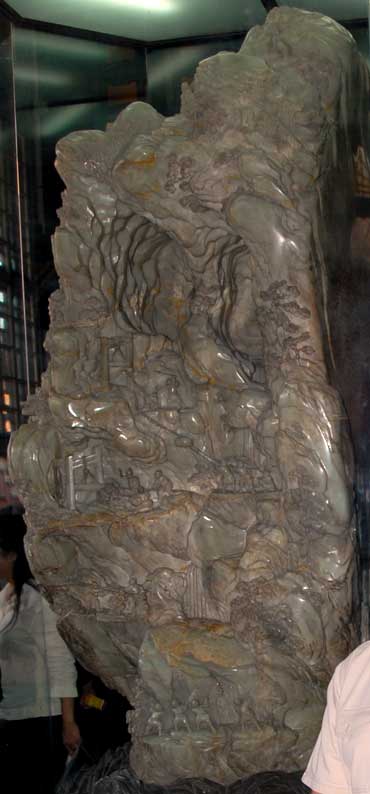 |
 |
| A gilt copper clock (English, 18th C.) on the back of a rhinoceros decorated with revolving flowers and rotating figures. Just one of dozens in the Palace Museum collection. The detail below shows that the timepiece is encrusted with jewels and decorated with enamelwork. |
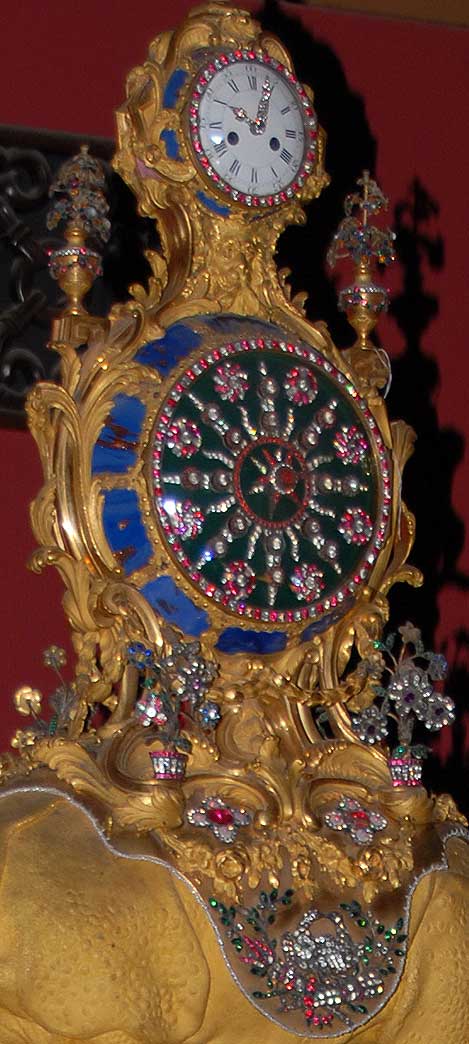 |
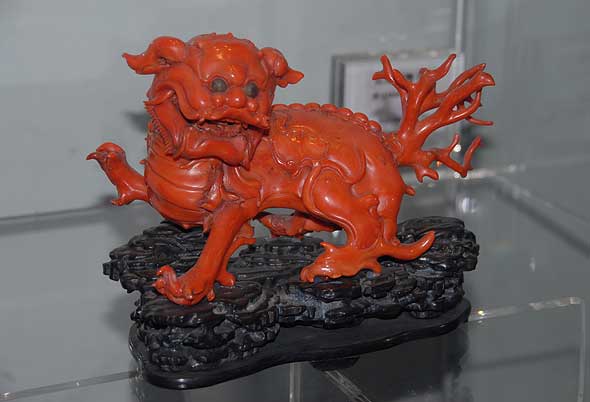 |
| This carved coral dragon-dog ingeniously makes use of several coral branches for a tail. |
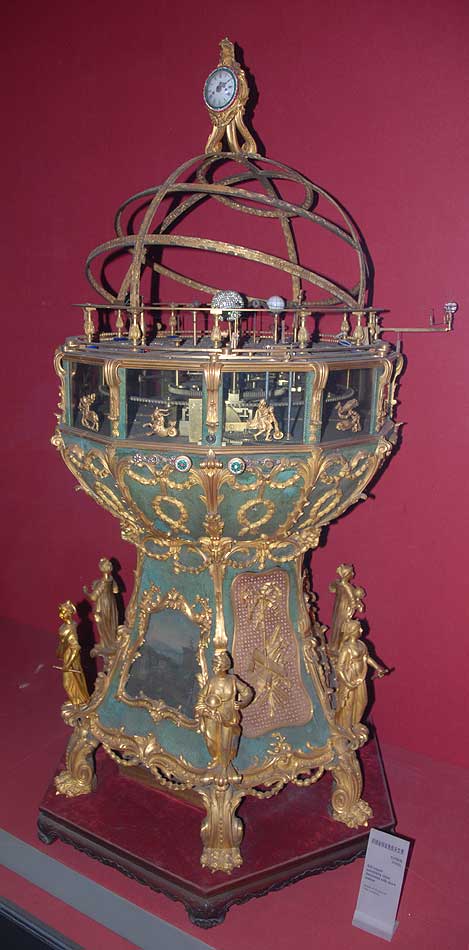 |
| A gilt copper astronomy clock (English, 18th C.) decorated with shark leather. This clock too is encrusted with jewels, including the clock dial on top and the “sun” at the center of the “solar system.” Zodiacal symbols are displayed behind the glass panels that house the clock’s works. |
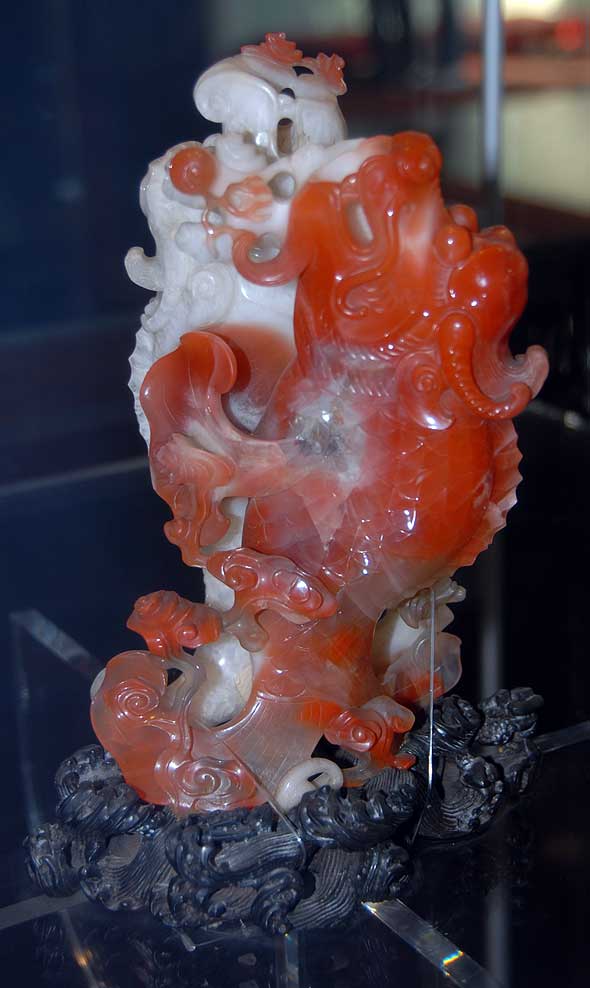 |
| A magnificent bi-color agate carving. Note how the base has been carved with comparable detail. |
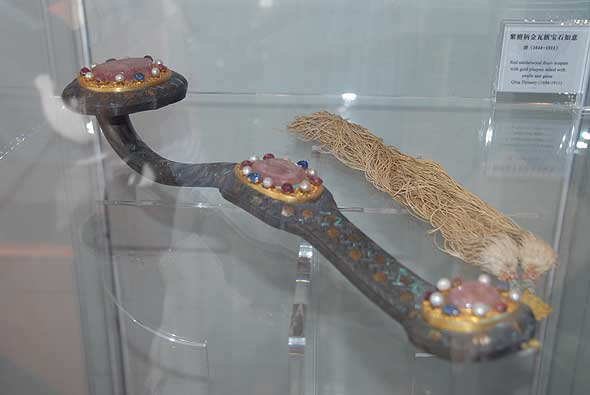 |
| Red sandalwood ruyi scepter with gold plaques inlaid with pearls and gems, Qing Dynasty 1644–1911. Ruyi (literally “as you wish”) scepters actually descended from bamboo backscratchers (as in being able to scratch your back “whenever you wish”). |
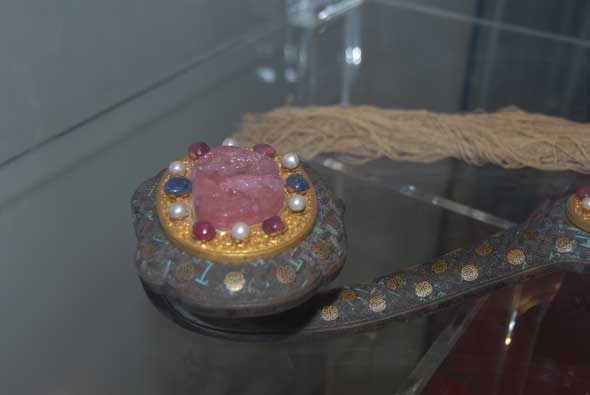 |
 |
| This astronomical globe maps out constellations with inlaid pearls. The globe’s frame appears as if supported by intricate dragon figures above a cloisonné compass at the base, itself fashioned as a roiling sea. |
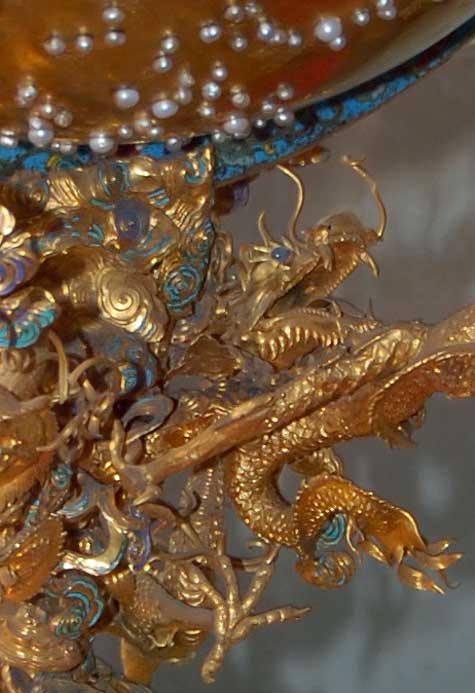 |
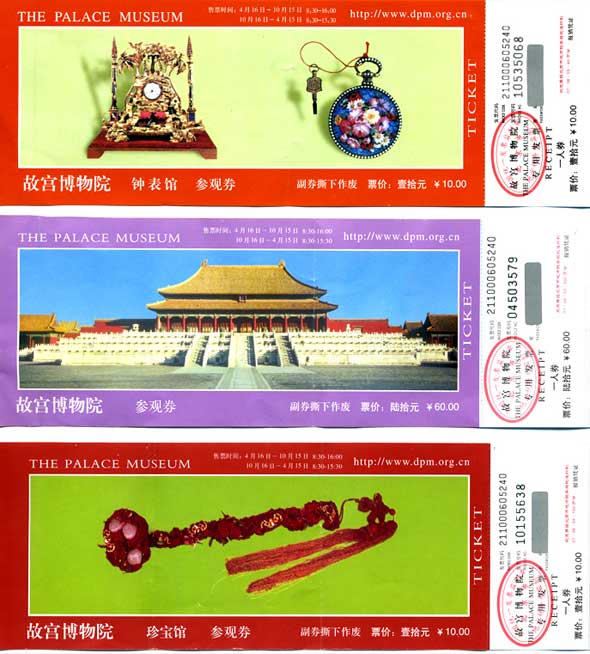 |
| Souvenirs. Even the tickets to the Palace Museum are worth hanging on to. The museum is housed in the imperial Forbidden City, which was home to 24 emperors from 1420 to 1924. |